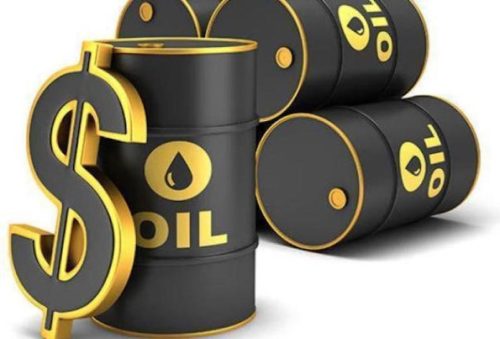The Nigeria Extractive Industries Transparency Initiatives (NEITI) says Nigeria earned 21 billion from the oil and gas sector in 2017.
NEITI disclosed this in its 2017 oil and gas industry report released in Abuja.
It said that the figure showed a 23 percent increase from the 2016 figures of 17.05 percent billion dollars and 15 percent lower than 24.79 billion dollars inflows recorded in 2015.
A breakdown of the financial flows by revenue streams showed that crude oil and gas sales topped the table with about 10.19 billion dollars, while other financial flows accounted for about 10.13 billion dollars.
It added that flows to other entities like the Niger Delta Development Commission (NDDC), and Nigeria Content Development Monitoring Board (NCDMB) among others were 669.05 million dollars.
“In a five-year comparison of revenue flows from the oil and gas sector, the report revealed that there was a steady decline in year-on-year revenues from 2013 to 2016, with the sharpest drop of 55 percent in 2015 compared to the preceding year.
“The year under review experienced a 23 percent increase in revenues, 23 percent from 17.055 billion dollars in 2016 to 20.988 billion dollars in 2017,’’ it said.
According to the report, 2017 witnessed a halt in the steady revenue decline the sector has been experiencing since 2013.
The report also showed that inflows from the Nigeria Liquefied Natural Gas (NLNG) as dividend, interest and loan repayment were 834 million dollars.
This, it said indicated a significant increase of 114 percent from the 2016 figures of 390 million dollars.
On oil production during the period under review, a marginal increase of 4.75 percent (690,465 mbbls) as against the 659,137 mbbls produced in 2016 was recorded.
It noted that the significant increase in revenues when compared to the increase in production volumes was as a result of the increase in oil prices.
The report further pointed out that average crude oil price was higher in 2017 and was sold for an average of 54.44 dollars as against the 43.73 dollars in 2016, and this signified an increase of 24.5 percent.
“Out of the 690,465 mbbls of crude oil produced in 2017, a total of 688,291 mmbls was lifted, representing an increase from the 668,147 mmbls lifted in 2016,’’ it added.
The NEITI report also showed that NNPC lifted a total of 241 million barrels (mbbls) of crude oil on behalf of the federation.
A breakdown of the liftings show that federation exports accounted for 135 million barrels, while the domestic crude liftings accounted for 106 million barrels.
It further disclosed that the federation exports volume went down by 36 per cent from 211 mbbls in 2016 to 135 mbbls in 2017.
It noted that while liftings by the companies amounted to 447 mbbls, joint venture operations, production sharing contracts and sole risk operators accounted for 130 mbbls, 223 mbbls and 79 million barrels respectively.
It said that the marginal field and service contract operators lifted 15mbbls and 1mbbls during the year under review
On crude allocation for domestic use, the report indicated that in 2017, the NNPC allocated 105.925 mbbls for domestic, while 25 percent of this quantity was supplied to the refineries, 69 percent was on the other hand utilised for the Direct Sales and Direct Purchase arrangement.
On production arrangements in terms of volumes, joint ventures (JVs) and production sharing contracts produced 305 mbbls and 303 mbbls.
It added that others such as service contracts, marginal fields and sole risks accounted for the balance.
“Sole Risk operations produced the highest percentage increase of 114 percent, and Marginal Field operations witnessed an increase of 32 percent in the year under review.
“Overall production from the JV companies increased by 16.199 mbbls, indicating a six percent increase from 2016 volumes.
“On the contrary, PSC and SC operations suffered volume reductions of six percent and 31 percent respectively,” it added.
On Gas production, it said that the total gas production was 3,494,774 mmscf from all arrangements, slightly higher than 2016 production of 3,051,249 mmscf by 15 percent.
It noted that the total volume of gas flared in 2017 increased by 23 percent, while gas utilisation saw a significant jump of 32 percent when compared to 2016 volumes.
The report also said 8.474 billion dollars was budgeted for Cash Call obligations, but only 49 per cent or 4.13 billion dollars was paid as at January 2018.
It said that out of the 5.125 billion dollars negotiated as outstanding cash call liabilities for 2016, 2.177 billion dollars was paid, therefore, leaving a balance of 2.948 billion dollars.
It further observed that 2017 witnessed a huge drop in crude oil theft, sabotage and deferred production.
“Nigeria lost about 36.5mbbls of crude oil to theft and sabotage and there was 69mbbls lost due to decrease in production volumes resulting from routine maintenance or unplanned repairs of the production facilities.
“This is regarded as a remarkable improvement particularly when compared to the 2016 figures of 101mbbls and 144mbbls lost to theft and deferred production respectively,’’ it said.
NEITI also noted that there was reduction in pipeline breaks in 2017 (924 breaks) when compared to the figures of the previous years (2013-3,571; 2014-3,732; 2015-2,832 and 2016-2,589 breaks).
This decline, it said suggested a positive return on the actions taken to mitigate vandalism.
The report further added that the oil and gas sector contributed 8.68 percent to Nigeria’s Gross Domestic Product (GDP).
The 2017 NEITI oil and gas report covered 63 entities. These include seven government agencies, 12 joint venture companies, 13 production sharing contract companies and 16 marginal field operators.
